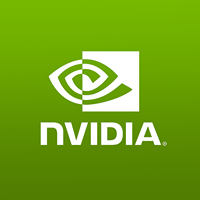Nvidia's Bold Leap into India's AI Future
October 25, 2024, 3:54 pm
Nvidia is setting its sights on India, a land ripe for technological transformation. The company's CEO, Jensen Huang, recently announced a partnership with Reliance Industries to build a robust AI infrastructure. This move is not just a business strategy; it’s a vision for the future.
India's AI market is on fire. Currently valued at around $6.26 billion, it’s projected to soar to $17 billion by 2027. This growth is fueled by a youthful population and a burgeoning tech ecosystem. The demographic dividend is real. With an average age below 35, India is a goldmine of talent and ambition.
At the AI Summit in Mumbai, Huang painted a picture of collaboration. Reliance is not just a partner; it’s a powerhouse. The company plans to establish a 1-gigawatt AI infrastructure in Jamnagar, with aspirations to scale it up. This infrastructure will be powered by green energy, aligning with global sustainability goals.
The partnership extends beyond mere infrastructure. Tech Mahindra is set to harness Nvidia’s chips and software to develop Indus 2.0, an AI model tailored for Hindi. This is a significant step. It marks a shift from merely consuming technology to creating it. Indian companies like Infosys and Wipro are already on board, training hundreds of thousands of employees to work with Nvidia’s platforms.
Nvidia’s commitment to India is evident. Over 500,000 developers are now part of its AI program. This is not just about numbers; it’s about building a community. A community that will drive innovation and push boundaries. The landscape is changing. India, once known for exporting software, is now poised to export AI solutions.
The collaboration with Reliance is a strategic masterstroke. Mukesh Ambani, the chairman of Reliance, emphasized the importance of deep tech. He highlighted how India's digital policies have transformed the nation into a leading digital society. The groundwork is laid. Now, it’s time to build.
Ambani’s vision is clear. He sees India as a global hub for research and innovation. The country is already home to 19% of the world’s chip designers. This talent pool is a magnet for global tech giants. Nvidia is keen to tap into this resource.
The digital infrastructure in India is world-class. With advancements in 4G, 5G, and broadband networks, the country is well-equipped to handle the demands of AI. Reliance’s Jio has played a pivotal role in this transformation. It has propelled India from 158th to first place in global data consumption. The scale is staggering. Jio delivered 16 exabytes of data this year alone.
Data costs in India are among the lowest globally. While the US pays about $5 per GB, in India, it’s just 15 cents. This affordability opens doors for innovation. It allows startups and established companies alike to experiment and grow without the burden of high costs.
Nvidia’s foray into India is not just about technology; it’s about empowerment. The company is training a new generation of AI specialists. With over 100,000 trained professionals, Nvidia is competing fiercely with AMD and Intel in the AI chip market.
The partnership with Reliance is a catalyst for change. It’s a signal to the world that India is ready to lead in AI. The country is not just a consumer of technology; it’s becoming a creator. The launch of Nemotron-4-Mini-Hindi-4B, a lightweight AI model supporting Hindi, is a testament to this shift.
Tech Mahindra’s development of Indus 2.0 is a significant milestone. It focuses on Hindi and its dialects, showcasing India’s commitment to localized AI solutions. This is not just about language; it’s about culture. It’s about making technology accessible to millions.
Nvidia’s vision aligns with India’s aspirations. The country is on the brink of an AI revolution. With strategic partnerships and a focus on education, the future looks bright. India is ready to export AI, not just software.
In conclusion, Nvidia’s partnership with Reliance is more than a business deal. It’s a bold step into a future where India leads in AI innovation. The groundwork is laid, the talent is ready, and the infrastructure is being built. The world is watching. India is poised to rise as a global leader in artificial intelligence. The journey has just begun.
India's AI market is on fire. Currently valued at around $6.26 billion, it’s projected to soar to $17 billion by 2027. This growth is fueled by a youthful population and a burgeoning tech ecosystem. The demographic dividend is real. With an average age below 35, India is a goldmine of talent and ambition.
At the AI Summit in Mumbai, Huang painted a picture of collaboration. Reliance is not just a partner; it’s a powerhouse. The company plans to establish a 1-gigawatt AI infrastructure in Jamnagar, with aspirations to scale it up. This infrastructure will be powered by green energy, aligning with global sustainability goals.
The partnership extends beyond mere infrastructure. Tech Mahindra is set to harness Nvidia’s chips and software to develop Indus 2.0, an AI model tailored for Hindi. This is a significant step. It marks a shift from merely consuming technology to creating it. Indian companies like Infosys and Wipro are already on board, training hundreds of thousands of employees to work with Nvidia’s platforms.
Nvidia’s commitment to India is evident. Over 500,000 developers are now part of its AI program. This is not just about numbers; it’s about building a community. A community that will drive innovation and push boundaries. The landscape is changing. India, once known for exporting software, is now poised to export AI solutions.
The collaboration with Reliance is a strategic masterstroke. Mukesh Ambani, the chairman of Reliance, emphasized the importance of deep tech. He highlighted how India's digital policies have transformed the nation into a leading digital society. The groundwork is laid. Now, it’s time to build.
Ambani’s vision is clear. He sees India as a global hub for research and innovation. The country is already home to 19% of the world’s chip designers. This talent pool is a magnet for global tech giants. Nvidia is keen to tap into this resource.
The digital infrastructure in India is world-class. With advancements in 4G, 5G, and broadband networks, the country is well-equipped to handle the demands of AI. Reliance’s Jio has played a pivotal role in this transformation. It has propelled India from 158th to first place in global data consumption. The scale is staggering. Jio delivered 16 exabytes of data this year alone.
Data costs in India are among the lowest globally. While the US pays about $5 per GB, in India, it’s just 15 cents. This affordability opens doors for innovation. It allows startups and established companies alike to experiment and grow without the burden of high costs.
Nvidia’s foray into India is not just about technology; it’s about empowerment. The company is training a new generation of AI specialists. With over 100,000 trained professionals, Nvidia is competing fiercely with AMD and Intel in the AI chip market.
The partnership with Reliance is a catalyst for change. It’s a signal to the world that India is ready to lead in AI. The country is not just a consumer of technology; it’s becoming a creator. The launch of Nemotron-4-Mini-Hindi-4B, a lightweight AI model supporting Hindi, is a testament to this shift.
Tech Mahindra’s development of Indus 2.0 is a significant milestone. It focuses on Hindi and its dialects, showcasing India’s commitment to localized AI solutions. This is not just about language; it’s about culture. It’s about making technology accessible to millions.
Nvidia’s vision aligns with India’s aspirations. The country is on the brink of an AI revolution. With strategic partnerships and a focus on education, the future looks bright. India is ready to export AI, not just software.
In conclusion, Nvidia’s partnership with Reliance is more than a business deal. It’s a bold step into a future where India leads in AI innovation. The groundwork is laid, the talent is ready, and the infrastructure is being built. The world is watching. India is poised to rise as a global leader in artificial intelligence. The journey has just begun.

